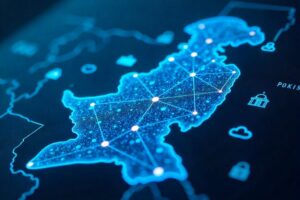Quantifying the footprint of our digital lives is not rocket science but it demands an understanding of the technology, its development, and usage. Ericsson IndustryLab’s latest report, ‘A quick guide to your digital carbon footprint’, deconstructs ICT’s carbon emissions and shows you everything you need to know about the climate impacts of our digital lives.
A lot of coverage on digital carbon footprints paint a bleak image, especially when making statements about the future. Why is this? Calculating carbon footprints isn´t rocket science but it demands an understanding of the technology and of the sector. At the same time, many outdated or theoretical estimates are circulating making it hard for non-experts to establish an understanding of the actual situation.
The ‘Quick guide to your digital carbon footprint’ aims to demystify ICT’s carbon footprint by going beyond just the electricity usage of products. The study incorporates greenhouse gas emissions associated with the energy and materials used throughout the life cycle of a product. A life cycle assessment is important because it takes into account the environmental impacts of a product or service from cradle to grave, for example from the mine to disposal.
- Listen to highlights of the report on the Ericsson News Podcast
Digital carbon footprints
The climate impact of ICT is complex as it involves three levels of impact. These include direct carbon emissions associated with ICT manufacturing, use, and disposal (e.g. the carbon footprint), indirect positive or negative emission effects from using ICT (e.g. travel substitution and transportation optimization) and impacting behaviors and preferences.
When you read headlines, for example, about the impact of streaming services or how ICT compares to other industries, they are usually focused on the direct carbon emissions or what we refer to as the digital carbon footprint, although other effects of the technology often have a much larger impact.
The “Despacito” example
In the spring of 2018, several media outlets reported that the approximately 5 billion downloads of the popular song, “Despacito”, had used as much electricity as the countries of Chad, Guinea-Bissau, Somalia, Sierra Leone and the Central African Republic put together in a single year.
The latest Consumer and IndustryLab report looked more closely at this example and found that 5 billion downloads of “Despacito” to a smartphone would require about 0.005TWh (a factor 200 less) including its share of networks and data centers. Typically, a download of one song requires 0.001kWh. In comparison, the electricity consumption of the above countries was about 1TWh in 2017 (1TWh = 1 billion kWh).
Pernilla Bergmark, Master Researcher at Ericsson and one of the authors of the IndustryLab report, says: “Make no mistake, though this report may show you that your digital footprint is a lower one than you might be anticipating, this is no excuse for inactivity. Ericsson has been a driving force in showing how digital technology can cut carbon emissions in half by 2030. We are one of the first companies that have set science-based targets committed to limiting global temperature rise to 1.5°C above pre-industrial levels.”
Key figures in the report:
- ICT sector footprint remains at 1.4% of global emissions despite data traffic growth
- Renewable electricity can reduce 80% of this footprint
- The fuel emissions per person for one Atlantic return trip compares to 50 years of smartphone usage
- The digital life of individuals represents a few percents of their footprint
- The report tells how this compares to other activities for different services and user profiles
- What digital solutions are used for impacts more than their footprints and comes with great potential if used well











